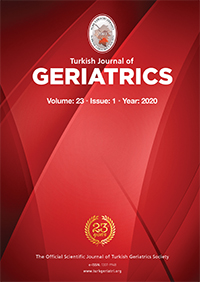2Antalya Training and Research Hospital, Department of General Surgery, Antalya, TURKEY DOI : 10.31086/tjgeri.2020.139 Introduction: In addition to bringing many physiological changes with it, aging is a period in which morbidity and mortality rates increase due to the increase in the incidence of chronic diseases and malignant diseases. The aim of this study was to determine the prevalence of conditions requiring intensive care and the mortality incidence based on geriatric age groups followed-up in the intensive care unit.
Materials and Method: Three different geriatric age groups were formed out of the 65 years old and older patients (n=5932) included in the study as young old (65?74 years), middle old (75?84 years) and oldest old (85 years and older). In each group, disease prevalence and mortality rate by diagnostic groups were analysed.
Results: The resulting diagnostic groups were found to be at different rates in different age groups (p = 0.01 p <0.05). Malignancy was high in young elderly patients (p = 0.01 p <0.05), while cardiovascular diseases were higher in other groups (p = 0.01 p<0.05). Patients admitted to the intensive care unit with cardiac arrest had the highest mortality rate (p = 0.01 p<0.05).
Conclusion: Geriatric patients constitute an important part of intensive care patients, therefore the mortality rate is high. In all three groups, 30?day mortality results were highest in patients with cardiac arrest followed by sepsis and cardiovascular diseases, respectively.
Keywords : Geriatrics; Intensive Care Units; Mortality; Age groups; Prevalence
